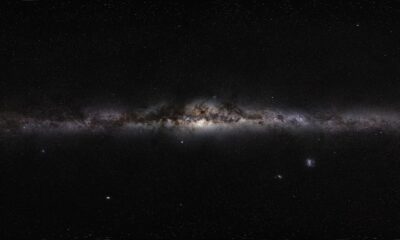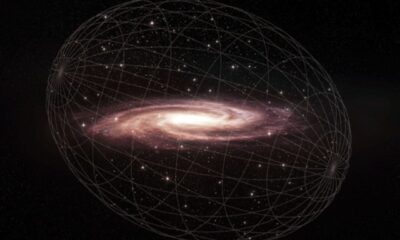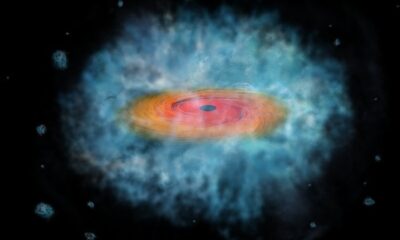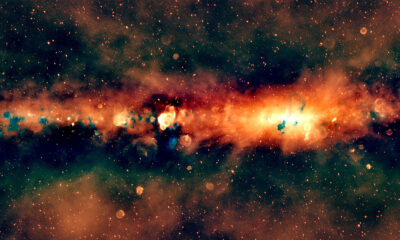Science
Astronomers Reveal Secrets of Milky Way’s Hidden Black Hole
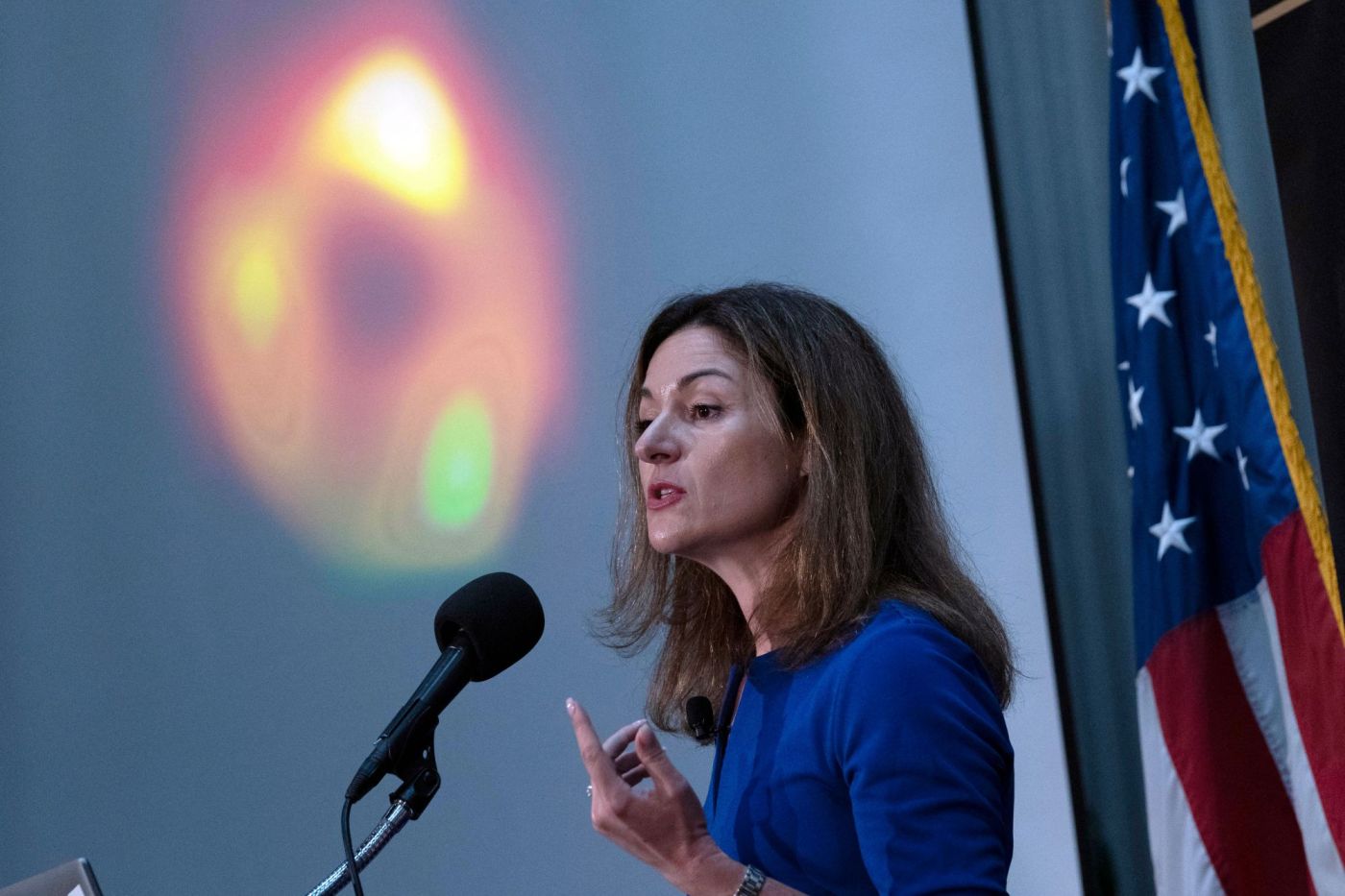
Recent discoveries have unveiled the intriguing nature of the Milky Way’s core, revealing a supermassive black hole known as Sagittarius A* (pronounced “Sagittarius A-star” and abbreviated as Sgr A*). This invisible entity, located approximately 26,000 light years away in the constellation Sagittarius, has a mass estimated at 4.3 million solar masses. Its presence has been confirmed through extensive studies of nearby stars that orbit this mysterious object.
Unveiling the Invisible
The journey to understanding Sgr A* began in 1931 when Karl Jansky, an engineer at Bell Telephone Laboratories, detected radio waves from an unknown source in the sky while testing radio antennas. The source was later identified as originating from the direction of the Milky Way, leading to the designation Sagittarius A (Sgr A).
Following World War II, advancements in radio telescope technology allowed astronomers to map the skies at radio frequencies. By the 1970s, astronomers Bruce Balick and Robert L. Brown utilized a baseline interferometer at the National Radio Astronomy Observatory in Virginia. Their work led to the identification of Sgr A* as the strongest radio emission source at the center of our galaxy.
Through observations of stellar movements, particularly the orbit of a star named S2, astronomers were able to refine their estimates of the mass and characteristics of Sgr A*. This analysis confirmed that it is indeed a supermassive black hole.
Understanding Black Holes
Black holes are formed when massive stars exhaust their nuclear fuel and undergo catastrophic collapse, creating a gravitational field so strong that even light cannot escape. Ordinary black holes result from stars exceeding about eight solar masses, while supermassive black holes, like Sgr A*, can reach millions or billions of solar masses. This concept suggests that supermassive black holes may have formed in the early universe, existing at the centers of large galaxies for over 12 billion years.
For instance, the giant elliptical galaxy Messier 87 (M87) features a supermassive black hole estimated to be about 6.5 billion solar masses, significantly larger than Sgr A*. The first image of a black hole was captured in 2019 from M87, showcasing the capabilities of modern astrophysical research.
On May 12, 2022, astronomers unveiled the first image of the accretion disk surrounding Sgr A* using the Event Horizon Telescope, a global network of radio observatories. Although the black hole itself cannot be directly visualized, the behavior of nearby objects and the energy emitted from gas and dust falling into it provide critical insights into its nature.
As stargazers look up at the constellation Sagittarius on clear evenings, they can reflect on the hidden power that lies at the heart of the Milky Way. Beyond the visible stars, concealed by clouds of interstellar dust, resides the supermassive black hole, a testament to the complexity and scale of our universe.
Dr. Augensen, director of the Widener University Observatory and emeritus professor of physics and astronomy at Widener University, emphasizes the significant role that continued research plays in unraveling the mysteries of our galaxy.
The ongoing study of Sgr A* not only enhances our understanding of black holes but also of the fundamental processes that govern the cosmos. As technology advances, the quest to comprehend these celestial phenomena will only deepen, revealing more about the universe’s enigmatic heart.
-

 Technology5 months ago
Technology5 months agoDiscover the Top 10 Calorie Counting Apps of 2025
-

 Health2 months ago
Health2 months agoBella Hadid Shares Health Update After Treatment for Lyme Disease
-

 Health3 months ago
Health3 months agoErin Bates Shares Recovery Update Following Sepsis Complications
-

 Technology4 months ago
Technology4 months agoDiscover How to Reverse Image Search Using ChatGPT Effortlessly
-

 Technology1 month ago
Technology1 month agoDiscover 2025’s Top GPUs for Exceptional 4K Gaming Performance
-

 Technology2 months ago
Technology2 months agoElectric Moto Influencer Surronster Arrested in Tijuana
-

 Technology5 months ago
Technology5 months agoMeta Initiates $60B AI Data Center Expansion, Starting in Ohio
-

 Technology5 months ago
Technology5 months agoRecovering a Suspended TikTok Account: A Step-by-Step Guide
-

 Health4 months ago
Health4 months agoTested: Rab Firewall Mountain Jacket Survives Harsh Conditions
-

 Lifestyle5 months ago
Lifestyle5 months agoBelton Family Reunites After Daughter Survives Hill Country Floods
-

 Technology4 months ago
Technology4 months agoHarmonic Launches AI Chatbot App to Transform Mathematical Reasoning
-

 Technology3 months ago
Technology3 months agoUncovering the Top Five Most Challenging Motorcycles to Ride

